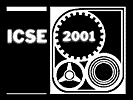| Back to Publications
| Author |
Hausi A. Müller, Mehmet A. Orgun, Scott R. Tilley, James S. Uhl. |
| Title |
A Reverse Engineering Approach To Subsystem Structure Identification |
| Publication |
Journal of Software Maintenance, Vol. 5, No. 4, pp. 181-204, December 1993. |
| Publisher |
John Wiley & Sons, Ltd. Copyright © 1993. |
| Summary |
Reverse engineering is the process of extracting system abstractions and design information out of existing software systems. This process involves the identification of software artifacts in a particular subject system, the exploration of how these artifacts interact with one another, and their aggregation to form more abstract system representations that facilitate program understanding.
This paper describes our approach to creating higher-level abstract representations of a subject system, which involves the identification of related components and dependencies, the construction of layered subsystem structures, and the computation of exact interfaces among subsystems. We show how top-down decompositions of a subject system can be (re)constructed via bottom-up subsystem composition. This process involves identifying groups of building blocks (e.g., variables, procedures, modules, and subsystems) using composition operations based on software engineering principles such as low coupling and high cohesion. The result is an architecture of layered subsystem structures.
The structures are manipulated and recorded using the Rigi system, which consists of a distributed graph editor and a parsing system with a central repository. The editor provides graph filters and clustering operations to build and explore subsystem hierarchies interactively. The paper concludes with a detailed, step-by-step analysis of a 30-module software system using Rigi. |
| Keywords |
Software maintenance, reverse engineering, program understanding, software engineering principles, resource-flow graphs, subsystem hierarchies, subsystem composition, exact interfaces, re-engineering, change analysis. |
Back to Publications |

